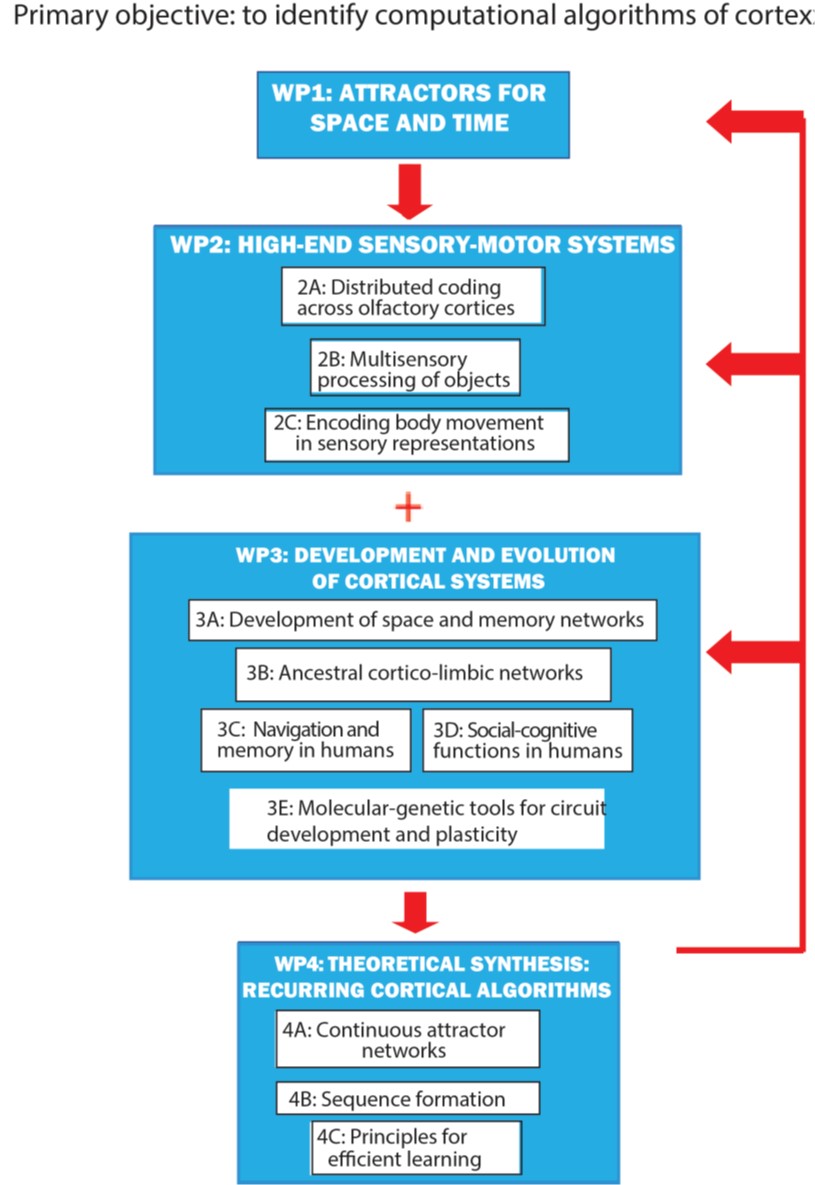WP4C: Principles of efficient learning in cortical networks - Kavli Institute for Systems Neuroscience
WP4C: Principles of efficient learning in cortical networks
About
Motivation
Connectivity motifs, i.e. repeated and stable patterns of presence/ absence of synaptic connections, are abundant in the cortex. However, an array of mechanisms alter the strength of existing connections and modulate how neurons respond to input, i.e. their transfer functions.
How do these mechanisms counterbalance each other to build a stable and efficient, but also fast-learning and adjustable machine, the cortex (P3,P4)?
Aims
To understand how single neuron properties, plasticity rules and network connectivity motifs optimise computation and learning efficiency, we will use CAC data to address the following questions:
4.7 What single neuron transfer functions and connectivity motifs are optimal for information storage and sensory representation in neural network models, given biologically plausible local learning rules? (P1, P3);
4.8 What neural codes would be expected to emerge in such optimal networks? (P3, P4);
4.9 How do these optimal features relate to those in the actual brain? (P1, P3, P4).
Implementation
We will use theoretical tools to calculate the information and storage capacities of biologically plausible neural network models with arbitrary or quasi-arbitrary (a) transfer functions and/or (b) connectivity motifs.
We will then optimize these capacities over (a) and (b) and compare the resulting optimal connectivity patterns with those inferred from the large-scale recordings in WP1 and WP3B.
We will evaluate the role of cell maturation patterns in building efficient attractor networks by comparing the performance of networks reminiscent to those with ablated CR cells (WP3A) and those without ablation.
Turning to sensory processing, we will identify transfer functions that are optimal not only for information representation in models of visual and tactile processing but also for the network’s ability to remain stable for the efficient representation of stimuli even when adjustments to novel contexts and tasks, achieved through plasticity mechanism
Principal Investigator

